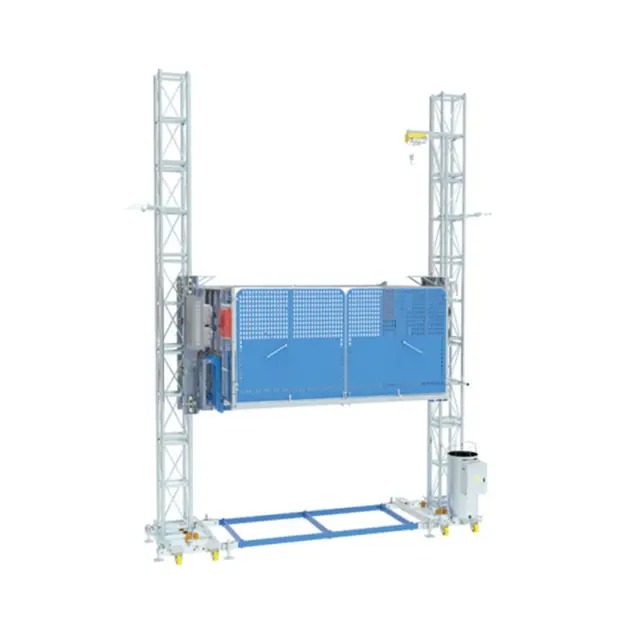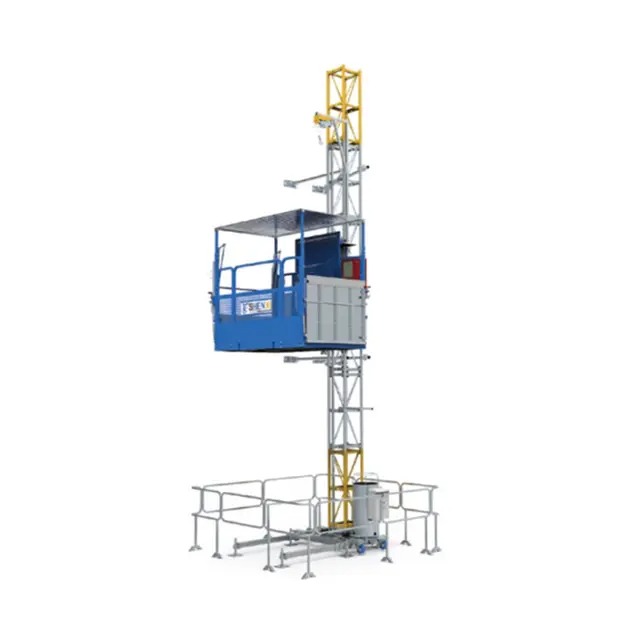




Views: 163 Author: Site Editor Publish Time: 2025-10-29 Origin: Site










In the ever-evolving landscape of modern industries, the need for efficient, reliable, and cost-effective material transport systems has grown tremendously. Whether in manufacturing, logistics, construction, or warehouses, transporting materials from one point to another is a critical task. This is where material transport platforms come into play. But what exactly is a material transport platform, and how does it benefit industries?
A material transport platform is a system or platform designed to facilitate the efficient movement of materials from one location to another within a facility or across a broader supply chain network. These platforms are vital components in automating and streamlining logistical processes, improving productivity, reducing human error, and minimizing downtime. They come in various forms, including conveyor belts, automated guided vehicles (AGVs), and other material-handling systems.
This article delves into the specifics of material transport platforms, how they work, their types, advantages, and applications in modern industries. By the end, you'll have a comprehensive understanding of these platforms and how they can transform operations in your industry.
Material transport platforms are engineered systems designed to simplify and expedite the transfer of materials. These systems often use a combination of mechanical, electrical, and digital technologies to move materials with minimal human intervention.
Automation plays a key role in material transport platforms. Conveyor belts, for example, can be programmed to move materials continuously, while robotic arms and automated guided vehicles (AGVs) can be used to handle complex tasks such as picking, sorting, and transporting. The degree of automation can range from simple, manual systems to fully autonomous solutions that are capable of performing tasks with little to no human oversight.
To ensure the smooth operation of material transport systems, platforms often come equipped with control and monitoring systems. These systems collect real-time data to track material movement, monitor platform performance, and detect any issues or malfunctions. This helps prevent delays and ensures that the transport process remains as efficient as possible.

Material transport platforms come in various forms, each designed to address specific industry needs and operational requirements. Understanding the different types is crucial when deciding on the most suitable platform for your business.
Conveyor belts are among the most common types of material transport platforms. They consist of a continuous loop of material (often made of rubber, steel, or fabric) that moves materials across different stages of the production or assembly line. Conveyor belts are ideal for transporting large quantities of uniform materials over short to medium distances.
| Feature | Conveyor Belts |
|---|---|
| Usage | High-volume, continuous material transport |
| Materials Moved | Bulk goods, packages, items in manufacturing processes |
| Advantages | Efficiency, cost-effective, reliable |
| Limitations | Limited flexibility in terms of routing |
AGVs are self-driving vehicles designed to transport materials around a facility. They follow pre-programmed paths and can navigate around obstacles, making them ideal for environments where flexibility and adaptability are crucial. AGVs are often used in warehouses and distribution centers to move items between storage locations.
| Feature | Automated Guided Vehicles (AGVs) |
|---|---|
| Usage | Flexible, on-demand transport in large facilities |
| Materials Moved | Pallets, goods, components |
| Advantages | Flexibility, scalability, increased productivity |
| Limitations | Requires initial investment and infrastructure |
Overhead cranes are used to lift and transport heavy materials in environments such as construction sites, steel mills, and warehouses. These platforms are typically mounted on tracks above the work area, and they are capable of moving large, bulky materials over significant distances.
| Feature | Overhead Cranes |
|---|---|
| Usage | Heavy lifting and material movement in industrial environments |
| Materials Moved | Steel, concrete, heavy machinery |
| Advantages | Capability to move very heavy loads |
| Limitations | Requires large space and infrastructure |
Pneumatic conveying systems use air pressure to move materials through pipes or ducts. These platforms are often used in industries like food processing, pharmaceuticals, and mining, where small to medium-sized particles need to be transported quickly and efficiently.
| Feature | Pneumatic Conveying Systems |
|---|---|
| Usage | Transporting powders, grains, and other small particles |
| Materials Moved | Granules, powders, particles |
| Advantages | Prevents contamination, suitable for fine materials |
| Limitations | Maintenance costs, limited to small particle sizes |
Material transport platforms offer several advantages to industries that incorporate them into their operations. Here are some of the key benefits:
By automating the material transport process, businesses can significantly increase the speed and efficiency of their operations. Conveyor belts and AGVs, for example, can operate 24/7, reducing the time spent moving materials manually.
With material transport platforms in place, the need for manual labor is reduced. This not only lowers labor costs but also minimizes the risk of workplace injuries, which is a critical concern in physically demanding environments.
Automated systems reduce the likelihood of human errors, which can lead to lost materials, misrouted items, or delays in production. Platforms such as AGVs use advanced sensors and navigation systems to ensure that materials are moved accurately and efficiently.
Many material transport platforms are designed to be scalable and flexible, allowing businesses to adjust their systems as their operational needs evolve. AGVs, for instance, can be easily reprogrammed or integrated with other automation systems to adapt to changes in the production line or warehouse layout.
While material transport platforms bring many advantages, there are also some challenges to consider when implementing them.
One of the most significant barriers to adopting material transport platforms is the initial cost. High-quality, automated systems like AGVs or robotic conveyors require substantial investment in both infrastructure and technology. However, the long-term cost savings in terms of labor, efficiency, and accuracy often justify this upfront expense.
Integrating a new material transport platform with existing operations can be a complex task. Businesses must ensure that the new system is compatible with their current technology, software, and processes. In many cases, this requires specialized expertise and planning to ensure a seamless transition.
Like any mechanical system, material transport platforms require regular maintenance to ensure their continued operation. Businesses must factor in the costs and logistics of maintaining these systems, including the need for spare parts, skilled technicians, and downtime for repairs.

Choosing the right material transport platform for your business depends on several factors, including the type of materials you're transporting, the scale of your operation, and your specific business goals.
Volume and Type of Materials: Different systems are suited to different types of materials (e.g., bulk goods vs. smaller items).
Facility Layout: The physical layout of your facility will impact your choice of platform.
Automation Needs: Decide whether you need a fully automated system or a semi-automated solution.
Budget and ROI: Consider both initial costs and long-term savings when evaluating your options.
| Criteria | Conveyor Belts | AGVs | Pneumatic Conveying |
|---|---|---|---|
| Material Type | Bulk, heavy items | Pallets, components | Small particles, powders |
| Automation | Low to medium | High | Medium to high |
| Cost | Moderate | High | Moderate to high |
Material transport platforms are essential for modern industrial operations, offering significant advantages in terms of efficiency, cost-effectiveness, and precision. Whether it’s through conveyor belts, AGVs, or pneumatic systems, these platforms can revolutionize how materials are moved, reducing the need for manual labor and optimizing production processes.
When selecting the right platform, businesses must carefully consider their specific needs, the type of materials they handle, and their budget. By integrating the right material transport platform, companies can streamline their operations, improve productivity, and stay competitive in a fast-paced marketplace.
1. What are the primary types of material transport platforms?
The most common types include conveyor belts, automated guided vehicles (AGVs), overhead cranes, and pneumatic conveying systems. Each has unique features suited to specific materials and environments.
2. How can a material transport platform improve workplace safety?
Automating material transport reduces the need for manual handling, which lowers the risk of workplace injuries and accidents, leading to a safer work environment.
3. Are material transport platforms customizable?
Yes, many platforms can be tailored to fit specific operational needs. This includes adjusting speed, load capacity, and layout to suit different industries.
4. What industries benefit most from material transport platforms?
Industries such as manufacturing, logistics, construction, food processing, and pharmaceuticals can all benefit from the efficiency and automation offered by material transport platforms.